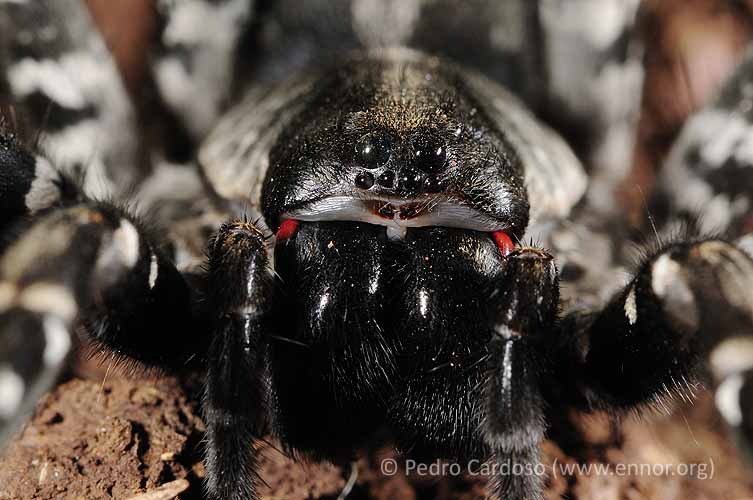The Desertas Wolf Spider, Hogna ingens, is listed as Critically Endangered on the IUCN Red List of Threatened Species. Despite its bulk (up to 40mm body size), it inhabits a single valley in the north of the Deserta Grande Island, Madeira. This area is now mostly invaded by grasses of the genus Phalaris and as a consequence the current distribution of H. ingens covers 23 ha, a reduction from its original 83 ha. A total of 4000 adults were estimated to live in the valley in 2011 and 2012.
A Species Conservation Plan workshop was held on the 9th and 10th of May 2016 in Funchal, Madeira, hosted by the regional Institute of Forests and Conservation of Nature. From IUCN were present Mark Stanley Price (chair of the Species Conservation Planning Sub-Committee – SCPSC), Axel Hochkirch (chair of the Invertebrate Conservation Sub-Committee – ICSC), Pedro Cardoso (chair of the Spider and Scorpion Specialist Group – SSSG) and Mark Bushell (SSSG and Bristol Zoological Society – BZS). The plan should soon be signed with the objectives of: 1) In-situ conservation. Restore the ecological balance in Vale da Castanheira through reduction of Phalaris density on the assumption that a viable population of the spider will persist across the entire valley; 2) Ex-situ conservation. Maintain and breed a second population of the spider; 3) Research. Analyse the genetic structure of the population, habitat preferences and potential consequences of climate change; and 4) Public outreach. Raise awareness of the importance and uniqueness of the spider.
In the meanwhile its implementation has begun. The population control of the grasses has started under a LIFE+ project and will continue until 2018. After the workshop a mixed National Park/IUCN team went to the island and captured 25 juveniles for captive breeding at Bristol Zoo. Hopefully, this ex-situ population will be successful as a backup for the small population still surviving in the island. The future seems better now!

